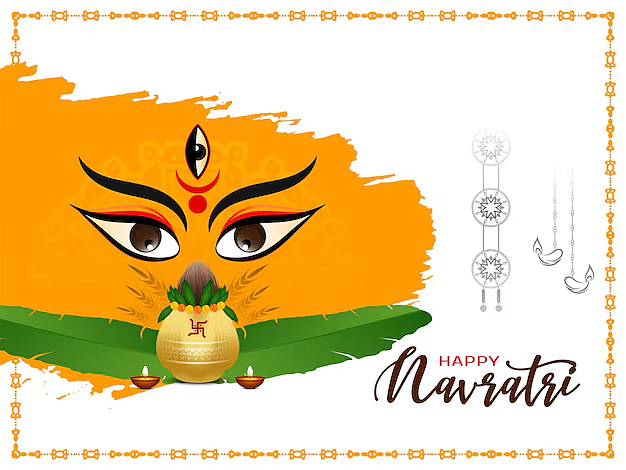Chaitra Navratri, one of the four Navratris celebrated in a year, is of immense significance in Hinduism. According to the lunisolar Hindu calendar, it marks the beginning of the Hindu New Year. It is a nine-day festival dedicated to the worship of Goddess Durga in her nine different forms (Navadurga). While all Navratras are considered auspicious, Chaitra Navratri holds a special place as it heralds the arrival of spring, symbolizing new beginnings, growth, and prosperity. This article will delve into the anticipated dates, timings, rituals, and profound significance of Chaitra Navratri in t025, providing a comprehensive guide to understanding and celebrating this auspicious festival.
When is Chaitra Navratri 2025: Date and Timing
According to Drik Panchang, this year, Chaitra Navratri will begin on March 29, 2025 and will conclude on April 7, 2025.
Date and timing:
Chaitra Shukla Pratipada Tithi Begins: March 29 at 4:27 PM
Chaitra Shukla Pratipada Tithi Ends: March 30 at 12:49 PM
Kalash Sthapana Muhurat: March 30, 6:13 AM to 10:22 AM
Abhijit Muhurat: March 30, 12:01 PM to 12:50 PM.
Important Rituals of Chaitra Navratri
While the exact timings will be available closer to the dates, here are some generally followed guidelines:
Ghatasthapana (Kalash Sthapana): This is the ritual of installing a Kalash (a pot filled with water, grains, and covered with a coconut and mango leaves) on the first day of Navratri. This symbolizes the invocation of the Goddess and marks the beginning of the festivities. The auspicious timings for Ghatasthapana, also known as Kalash Sthapana or Kalash Pujan, will be determined by the planetary positions and the panchang (Hindu calendar). Look for the Abhijit Muhurat which is considered highly auspicious.
Puja Rituals: Daily prayers and rituals are performed, including chanting mantras, offering flowers, incense, and sweets to the Goddess. Each day is dedicated to a specific form of Durga, and the corresponding mantras and prayers are recited.
Fasting (Vrat): Many devotees observe a strict fast during Navratri, abstaining from grains, pulses, onion, garlic, and non-vegetarian food. Satvik food, consisting of fruits, vegetables, milk products, and certain flours like Kuttu (buckwheat) and Singhara (water chestnut), is consumed.
Kanya Pujan: On Ashtami (Day 8) or Navami (Day 9), Kanya Pujan is performed, where young girls (typically 2 to 10 years old), representing the Goddess, are worshipped and offered food, gifts, and respect. This is considered a highly auspicious act.
Rama Navami Celebrations: Navami, the ninth day, is celebrated as Rama Navami, marking the birth of Lord Rama. Special prayers, bhajans (devotional songs), and processions are organized to commemorate this occasion.
Visarjan (Immersion): On Dashami (the day after Navami), the idols or images of the Goddess Durga are immersed in a river or other water body, symbolizing the completion of the festival and the return of the Goddess to her divine abode.
Significance of Chaitra Navratri
Chaitra Navratri is deeply significant as it heralds the Hindu New Year, aligning with the spring equinox to symbolize renewal and the triumph of good over evil, while also serving as a dedicated period to worship Goddess Durga, the embodiment of Shakti, for strength and protection; the fasting and rituals practiced during this time facilitate spiritual purification and self-awareness, and in rural areas, it marks the commencement of the agricultural season, with the festival culminating in Rama Navami, reinforcing the importance of dharma and devotion.
Types of fasts that devotees observe during Chaitra Navratri
During Chaitra Navratri, fasting practices vary, but they generally involve dietary restrictions aimed at purification. Many devotees abstain from grains, meat, onions, and garlic, opting for fruits, dairy products, and specific flours like singhara or kuttu. Some observe a strict fast, consuming only water or fruits, while others have one or two sattvic meals a day. The focus is on consuming pure, simple foods and maintaining a clean and peaceful mind, enhancing the spiritual experience.
How Maiya Durga will arrive this Chaitra Navratri 2025
This year, Maa Durga will arrive and go on an elephant since Chaitra Navratri will start and end on a Sunday. Maa Durga's presence on an elephant is seen as extremely fortunate in Hinduism. It is thought to represent the nation's wealth, plenty, and excellent rainfall. An essential feature of Navratri celebrations is the mode of Maa Durga's entry and departure, which is thought to provide insights into the future influence on nature, crops, and human life.
What is the difference between Chaitra Navratri and Sharad Navratri?
The primary difference between Chaitra Navratri and Sharad Navratri lies in their timing and associated seasonal significance. Chaitra Navratri occurs in the spring (March/April) and marks the beginning of the Hindu New Year in some regions, culminating in Rama Navami. Sharad Navratri, on the other hand, takes place in the autumn (September/October), signifying the transition after the monsoon season and leading to Dussehra (Vijayadashami), which celebrates the victory of good over evil. While both festivals honor the Goddess Durga, Sharad Navratri is generally more widely celebrated across India.
Chaitra Navratri 2025 promises to be a time of spiritual renewal, celebration, and devotion. By understanding the dates, timings, rituals, and significance of this auspicious festival, you can prepare yourself to fully embrace its blessings and welcome the Hindu New Year with renewed hope and prosperity. Remember to verify the exact dates and timings with a trusted source closer to the time. May Goddess Durga bless you and your family with happiness, peace, and abundance!
Follow 바카라 Experiences:
| | |















